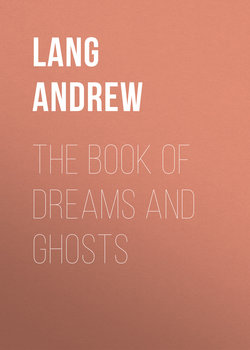Читать книгу The Book of Dreams and Ghosts - Lang Andrew, May Kendall - Страница 17
CHAPTER II
QUEEN MARY’S JEWELS
Оглавление“I have had a strange dream about your ring” (a “medallion” of Anthony and Cleopatra); “it is very valuable.”
Major Buckley said it was worth £60, and put the ring into his friend’s hand.
“It belonged to royalty.”
“In what country?”
“I see Mary, Queen of Scots. It was given to her by a man, a foreigner, with other things from Italy. It came from Naples. It is not in the old setting. She wore it only once. The person who gave it to her was a musician.”
The seer then “saw” the donor’s signature, “Rizzio”. But Rizzio spelled his name Riccio! The seer now copied on paper a writing which in his trance he saw on vellum. The design here engraved (p. 32) is only from a rough copy of the seer’s original drawing, which was made by Major Buckley.
“Here” (pointing to the middle) “I see a diamond cross.” The smallest stone was above the size of one of four carats. “It” (the cross) “was worn out of sight by Mary. The vellum has been shown in the House of Lords.” 17
“.. The ring was taken off Mary’s finger by a man in anger and jealousy: he threw it into the water. When he took it off, she was being carried in a kind of bed with curtains” (a litter).
Just before Rizzio’s murder Mary was enceinte, and might well be carried in a litter, though she usually rode.
The seer then had a view of Sizzle’s murder, which he had probably read about.
Three weeks later, in another trance, the seer finished his design of the vellum. The words
A
M
DE LA PART
probably stand for à Marie, de la part de —
The thistle heads and leaves in gold at the corners were a usual decoration of the period; compare the ceiling of the room in Edinburgh Castle where James VI. was born, four months after Rizzio’s murder. They also occur in documents. Dr. Gregory conjectures that so valuable a present as a diamond cross may have been made not by Rizzio, but through Rizzio by the Pope.
It did not seem good to the doctor to consult Mary’s lists of jewels, nor, if he had done so, would he have been any the wiser. In 1566, just before the birth of James VI., Mary had an inventory drawn up, and added the names of the persons to whom she bequeathed her treasures in case she died in child-bed. But this inventory, hidden among a mass of law-papers in the Record Office, was not discovered till 1854, nine years after the vision of 1845, and three after its publication by Dr. Gregory in 1851. Not till 1863 was the inventory of 1566, discovered in 1854, published for the Bannatyne Club by Dr. Joseph Robertson.
Turning to the inventory we read of a valuable present made by David Rizzio to Mary, a tortoise of rubies, which she kept till her death, for it appears in a list made after her execution at Fotheringay. The murdered David Rizzio left a brother Joseph. Him the queen made her secretary, and in her will of 1566 mentions him thus: —
“A Josef, pour porter à celui qui je luy ay dit, une emeraude emaille de blanc.
“A Josef, pour porter à celui qui je luy ai dit, dont il ranvoir quittance.
“Une bague garnye de vingt cinq diamens tant grands que petis.”
Now the diamond cross seen by the young officer in 1845 was set with diamonds great and small, and was, in his opinion, a gift from or through Rizzio. “The queen wore it out of sight.” Here in the inventory we have a bague (which may be a cross) of diamonds small and great, connected with a secret only known to Rizzio’s brother and to the queen. It is “to be carried to one whose name the queen has spoken in her new secretary’s ear” (Joseph’s), “but dare not trust herself to write”. “It would be idle now to seek to pry into the mystery which was thus anxiously guarded,” says Dr. Robertson, editor of the queen’s inventories. The doctor knew nothing of the vision which, perhaps, so nearly pried into the mystery. There is nothing like proof here, but there is just a presumption that the diamonds connected with Rizzio, and secretly worn by the queen, seen in the vision of 1845, are possibly the diamonds which, had Mary died in 1566, were to be carried by Joseph Rizzio to a person whose name might not safely be written. 18
We now take a dream which apparently reveals a real fact occurring at a distance. It is translated from Brierre de Boismont’s book, Des Hallucinations 19 (Paris, 1845). “There are,” says the learned author, “authentic dreams which have revealed an event occurring at the moment, or later.” These he explains by accidental coincidence, and then gives the following anecdote, as within his own intimate knowledge: —
17
Perhaps among such papers as the Casket Letters, exhibited to the Commission at Westminster, and “tabled” before the Scotch Privy Council.
18
To Joseph himself she bequeathed the ruby tortoise given to her by his brother. Probably the diamonds were not Rizzio’s gift.
19
Boismont was a distinguished physician and “Mad Doctor,” or “Alienist”. He was also a Christian, and opposed a tendency, not uncommon in his time, as in ours, to regard all “hallucinations” as a proof of mental disease in the “hallucinated”.
